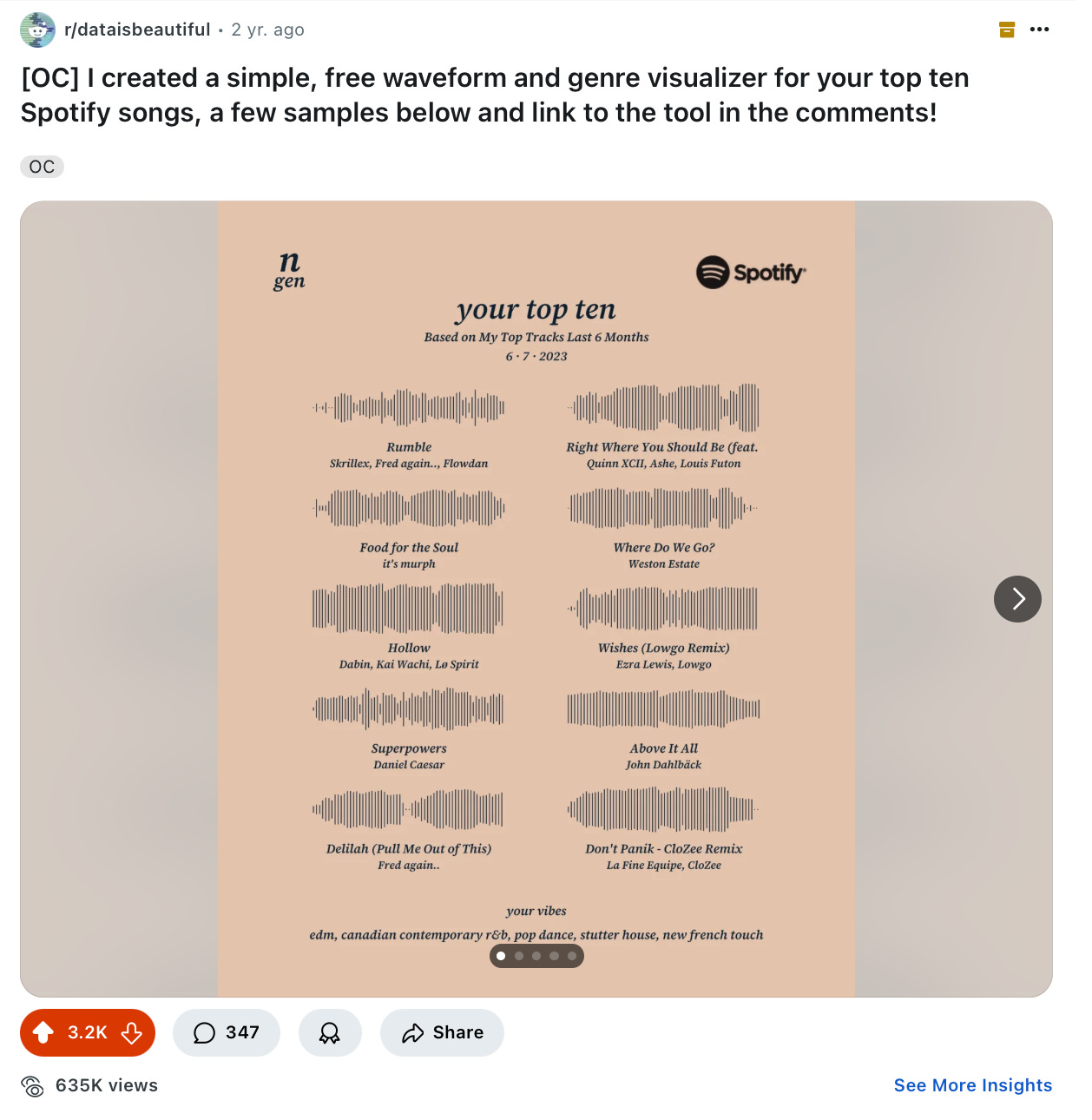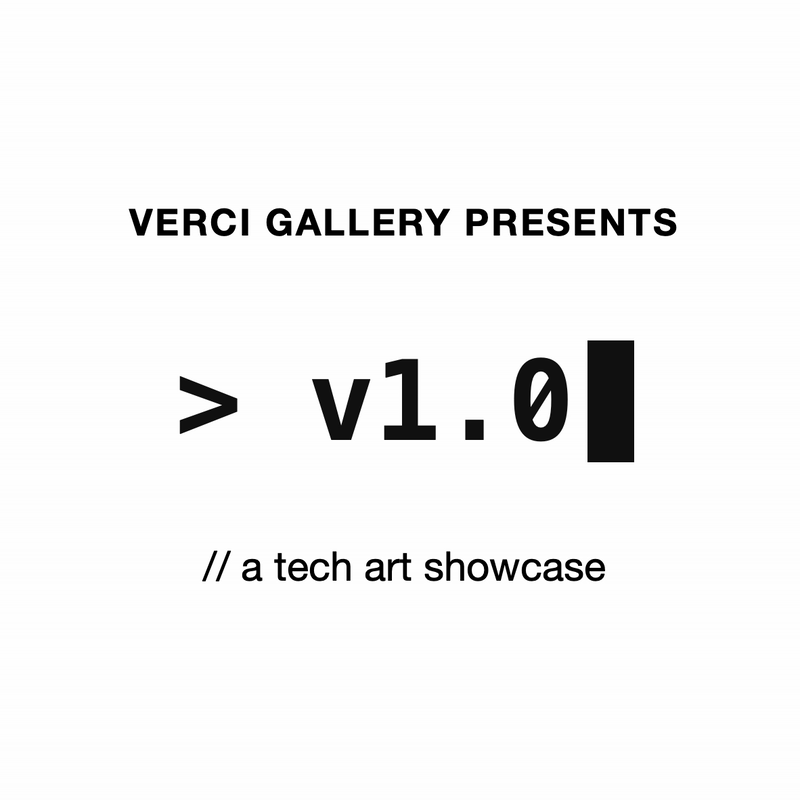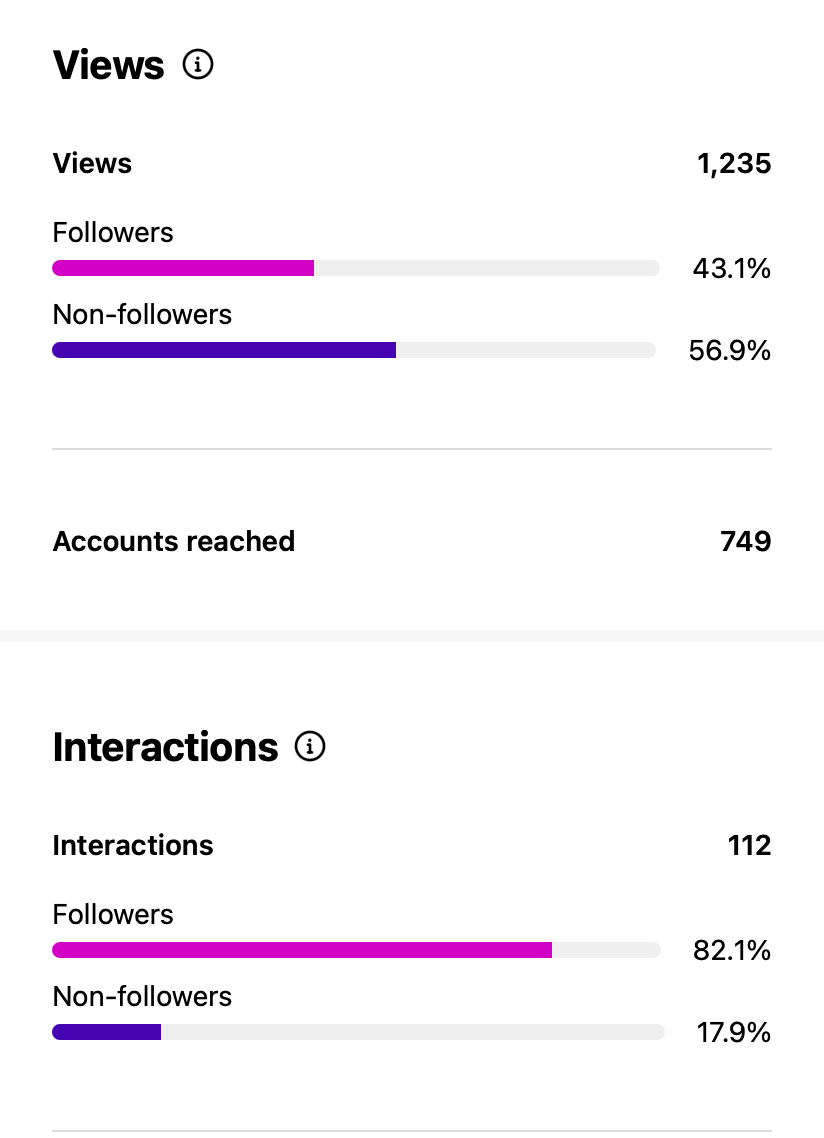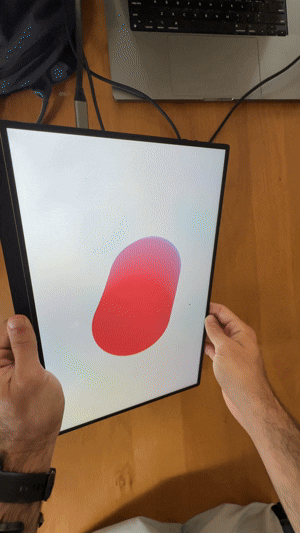My old roommate, Niel, always used to say:
There’s no substitute for output.
He said it about everything — work, fitness, dating, starting a company. He’d say it so often it actually became pretty annoying.
But he was absolutely right. You can plan and optimize your ideas all you want. At the end of the day, you actually have to put something out in the world to make any meaningful progress.
At the time of writing this, he’s just finished his first half-Ironman. He earned it the same way everyone does: one day at a time. Miles in the pool, on the bike, and on foot leading up to the race.
Congrats Niel! You’re a legend.
That phrase — there’s no substitute for output — has stuck with me.
It’s something I have to remind myself of every damn day.
Not all output is created equal
I’ve been thinking a lot about what it means to make something that spans creative mediums. Something a little hard to define, categorize, or even explain to the average person.
In my case, I make data art, two words that are already pretty broad on their own. So I have to work hard to make the work even make sense to folks.
It’s easy to get lost in polishing the inputs. Integrating the data, perfecting the visuals, rewriting the description to explain what it is. But when the goal is to explore the boundaries of a new form, none of that matters if the work never leaves my hands.
There is no substitute for output.
That doesn’t mean all output is equal or even good.
Most importantly, my goals still have to shape the work. The output, in any form, should be aligned to those goals.
I have at times focused on outputs that had lent themselves more towards a start-up’s or consumer app’s goals, not data art.
But even imperfect output creates motion. It’s helped me realize my original outputs were not in service of my true goals.
And it opens the door for something else critical: Feedback.
Designing for feedback
The real challenge is not just producing output — it’s figuring out how to get feedback that actually helps you move it forward.
In fitness and sport, feedback is often obvious and immediate: you either lift the weight or you don’t. You have a coach telling you if you’re improving. You compete against others and ultimately win or lose.
In startups, people either pay you for your product or don’t. Metrics tell you what’s working and where you can improve. You survive and grow or you stall out.
But in creative work — especially the weird, experimental, hard-to-label kind — feedback isn’t always as clear.
So you have to create the conditions for good feedback.
You have to hunt it.
That’s where I’ve struggled.
I’m not interested in turning my work into a performance. I’m not trying to rack up likes and optimize for engagement.
But I am trying to build a world — and a window into that world allows people to offer feedback.
The only way to know what’s landing is to put the work out in public, even if it’s not often how I’d prefer it be seen.
Instagram Reels aren’t a perfect feedback loop. They don’t capture the interactivity or physicality of the data art I’m making. They don't allow users to share their data.
They flatten the work. Abstract it. Reducing it to a hook and a snippet.
It fucking sucks.
But even that is better than nothing.
For two weeks in a row, I’ve managed to put out a tiny little video. It’s not perfect, but it’s progress.
As a result, thousands of people have now seen pieces of the work — people who would’ve never come across it otherwise. That matters. Even if the medium blows and the presentation feels a bit performative.
This allows me to gather input on what’s working, connect with a few new people, and build momentum.
After all, sharing my work on Reddit was the reason my first few pieces reached millions.

The feedback isn’t perfect. But it’s something. And that something is a hell of a lot better than a project that never leaves your hard drive.
Of course, some feedback is bad feedback. People give me bad advice all the time, and I am sure I’ve given some terrible advice over the years.
Only experience and a clear understanding of your goals will help you discern the feedback that is worth acting on or feedback worth forgetting.
Building a window to my work
After talking with a few other digital artists, I realized we were all craving the same thing: a way for people to experience the work beyond their phones.
A lot of what we make does translate well to social media — it’s visual, dynamic, shareable. But there’s still something missing when the only way people encounter it is through a 6-inch screen.
We wanted to create space for the art to be seen at scale and, in some cases, invite in-person interaction and play
So I decided to host a gallery.

For me, the biggest gap with posting online is that people can only view my work, but they can’t experience it the way I intend it to be felt.
And while there are galleries that showcase generative or digital work, I didn’t want to wait for permission.
I wanted to make space for myself and invite a few other artists doing similar and thoughtful work to share as well.
We’ll be sharing different pieces, our process, and getting real feedback. Should be fun :D
If you’re in New York and want to stop by, it’s free!
I will be promoting this religiously over the next few weeks, so stay tuned for updates as it continues to come together.
Output is contagious
One last note. I had two moments this past Friday that really stuck with me.
As I mentioned a few weeks ago, I’ve published this newsletter every week for over a year now. On Friday, my friend
shared in a group setting that my writing practice had inspired her to start her own. She’s on week 2, and the writing is great! Check her out.Separately, James, a friend and fellow artist who’ll be debuting work at the gallery, recently shared a piece built around lie detector sensors.
Afterward, he told me that it was my work with sensor data that encouraged him to explore that direction and combine it with his already incredible generative art. I was so touched!
We often think of output as something that moves our work forward.
But when we share what we’re doing — especially the process — we create space for others to try something new, too.
Those two comments made my week.
Output builds momentum not only for yourself, but for others too.
There is no substitute for output
Not planning. Not optimizing. Not waiting.
The only way forward is to do the work.
Share it. Let it be seen. Get feedback.
And then repeat. Repeat. Re:Pete (:D)
There is no substitute for output.
What I Did This Week — Prints & Stuff
Sent out my first set of prints! Was cool to sign these and get them out the door.
These were made by hand if you can believe it! I used a sensor attached to my computer to twist the output and change the colors, saving a few to create these prints.
Also, for the live show I am working on, have been getting better at 3D in the browser. This little character will be the main representation of the user throughout the show. He glows and changes color, and face gets sick if you move him around too quickly! Excited to keep building him out.
Something Beautiful — In-Flight Coffee
Grant Yun is an artist who specializes in what he calls vectorized realism.
His work depicts seemingly mundane scenes but in a way that is so beautiful it inspires a sense of nostalgia and comfort. Having been on a pair of long flights myself this week, this one stuck with me.







What's the name/link to the music waveform generator you made for Spotify top 10 lists? That looks really cool.
Re: the article. Bias toward action is actually so hard to get across to people. I know so many wannabepreneurs or aspiring artists with tons of ideas or tons of hours spent researching...who do nothing. As much as I want to help, I also have to understand that doing is ultimately on them. I think the fear of feedback, especially negative feedback, can be so heavy.